| Coach | NA |
| Venue | Stadion Čika Dača |
Radnicki 1923 predictions
Predictions for Radnicki 1923: See upcoming and historic predictions for Radnicki 1923 below.
Disclaimer: Past performance does not guarantee future results. Betting involves risk; only wager what you can afford to lose. Always gamble responsibly.
Radnicki 1923 latest results
| 13/04 | - | ||
| 09/04 | - | ||
| 06/04 | 3 - 1 | ||
| 02/04 | 2 - 0 | ||
| 29/03 | 3 - 1 |
Radnicki 1923 latest transfers
| Date | Player | From | To | Price |
|---|---|---|---|---|
| 2012-07-01 | F. Kostić | Radnicki 1923 | Groningen | € 1.3M |
Super Liga standings
| Rank | Team | MP | W | D | L | GF | GA | GD | Pts |
|---|---|---|---|---|---|---|---|---|---|
| 1 |
 FK Crvena Zvezda
FK Crvena Zvezda
|
29 | 24 | 2 | 3 | 74 | 22 | 52 | 74 |
| 2 |
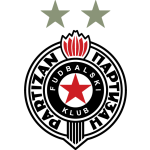 FK Partizan
FK Partizan
|
28 | 21 | 4 | 3 | 62 | 32 | 30 | 67 |
| 3 |
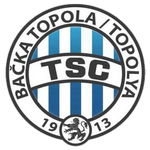 TSC Backa Topola
TSC Backa Topola
|
29 | 17 | 9 | 3 | 55 | 26 | 29 | 60 |
| 4 |
 Vojvodina
Vojvodina
|
29 | 13 | 8 | 8 | 46 | 40 | 6 | 47 |
| 5 |
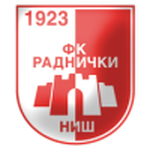 Radnicki 1923
Radnicki 1923
|
29 | 15 | 2 | 12 | 44 | 45 | -1 | 47 |
| 6 |
 Cukaricki
Cukaricki
|
29 | 12 | 9 | 8 | 41 | 31 | 10 | 45 |
| 7 |
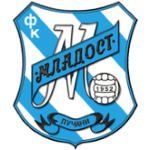 Mladost Lucani
Mladost Lucani
|
28 | 11 | 7 | 10 | 29 | 37 | -8 | 40 |
| 8 |
 Napredak
Napredak
|
28 | 11 | 5 | 12 | 30 | 36 | -6 | 38 |
| 9 |
 Novi Pazar
Novi Pazar
|
28 | 10 | 5 | 13 | 33 | 36 | -3 | 35 |
| 10 |
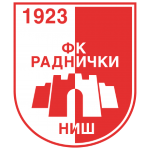 Radnicki NIS
Radnicki NIS
|
29 | 9 | 5 | 15 | 31 | 38 | -7 | 32 |
| 11 |
 FK Spartak Zdrepceva KRV
FK Spartak Zdrepceva KRV
|
29 | 9 | 4 | 16 | 28 | 44 | -16 | 31 |
| 12 |
 FK Vozdovac
FK Vozdovac
|
29 | 7 | 9 | 13 | 37 | 46 | -9 | 30 |
| 13 |
 IMT Novi Beograd
IMT Novi Beograd
|
28 | 8 | 4 | 16 | 31 | 45 | -14 | 28 |
| 14 |
 Javor
Javor
|
28 | 8 | 4 | 16 | 27 | 44 | -17 | 28 |
| 15 |
 Železničar Pančevo
Železničar Pančevo
|
29 | 7 | 5 | 17 | 34 | 56 | -22 | 26 |
| 16 |
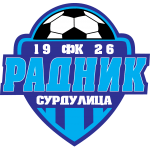 Radnik Surdulica
Radnik Surdulica
|
29 | 2 | 8 | 19 | 17 | 41 | -24 | 14 |
About Radnicki 1923
Radnicki 1923 is a professional football club based in Kragujevac, Serbia. Founded in 1923, the club has a rich history and has played a significant role in the development of Serbian football. The club's name, Radnicki, translates to "worker," reflecting its origins as a team for the working class.
The club's early years were marked by local and regional success. However, the outbreak of World War II disrupted its progress. After the war, Radnicki 1923 reestablished itself and began to make its mark on the national stage.
In the 1960s and 1970s, Radnicki 1923 had its most successful period, playing in the top tier of Yugoslav football, the Yugoslav First League. The club produced many talented players during this period who went on to represent Yugoslavia on the international stage.
The 1990s were a challenging time for Radnicki 1923 due to the breakup of Yugoslavia and the subsequent economic crisis in Serbia. Despite these challenges, the club managed to survive and continue its tradition of developing young talent.
In the 21st century, Radnicki 1923 has fluctuated between the top two tiers of Serbian football, the Serbian SuperLiga and the Serbian First League. The club has also participated in the Serbian Cup, reaching the final in 2011.
Radnicki 1923's home ground is the Čika Dača Stadium, named after Danilo Stojanović, a prominent Serbian footballer from the early 20th century. The stadium has a capacity of over 15,000 and is known for its passionate and loyal fan base.
The club's colors are red and white, and its emblem features a worker holding a hammer, reflecting its working-class roots. Radnicki 1923 has a fierce rivalry with FK Šumadija 1903, another club from Kragujevac, with matches between the two teams known as the "Kragujevac derby."
Throughout its history, Radnicki 1923 has been known for its commitment to youth development. The club's academy has produced many players who have gone on to have successful careers in Serbia and abroad. This focus on youth development is part of the club's philosophy of promoting local talent and contributing to the community.
Despite the challenges it has faced, Radnicki 1923 remains a symbol of resilience and passion for football in Kragujevac and Serbia. The club's history and tradition, combined with its commitment to youth development, ensure that it continues to play a significant role in Serbian football.















